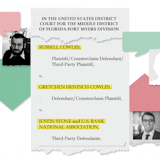Minnesota's pioneering health insurance program for lower-income residents, MinnesotaCare, would be expanded to a much broader swath of the population under two DFL proposals introduced last week in the House.
The proposals, known as MinnesotaCare buy-in, would leverage the purchasing power of government health programs to offer coverage with lower premiums and out-of-pocket costs than commercial insurance in the private market for Minnesotans who make more than the program's current income limits.
Sometimes called a public option, the concept has been popular with Democrats eager to reduce the number of uninsured Americans and give consumers an alternative to private health coverage. Buy-ins are being considered in several states, including New Mexico, Colorado and Washington. In 2017, Nevada passed a buy-in, but it was vetoed by that state's governor.
The idea is not new to Minnesota. Former Gov. Mark Dayton made it a legislative priority last session, and two years ago the Minnesota Senate, with a lone Republican supporter, nearly passed it as an amendment to another health care bill.
The plan could gain new traction this year, with a DFL majority in the House and support from DFL Gov. Tim Walz, who frequently mentioned it on the campaign trail.
"One thing we hear consistently from Minnesotans as we travel the state is they want a buy-in option," Walz said in a statement to the Star Tribune. "This is the beginning of a process to make sure Minnesotans have access to a public option and affordable, high quality health care."
Still, it faces an uphill battle in the Republican-controlled Senate, with Majority Leader Paul Gazelka calling it a "solution that will bring us to disaster."
The idea is to use the skeleton of a government health insurance program, which pays lower reimbursement rates to hospitals, doctors and other providers, to reduce overall costs. That could translate into premiums that are below those offered by private insurers.


